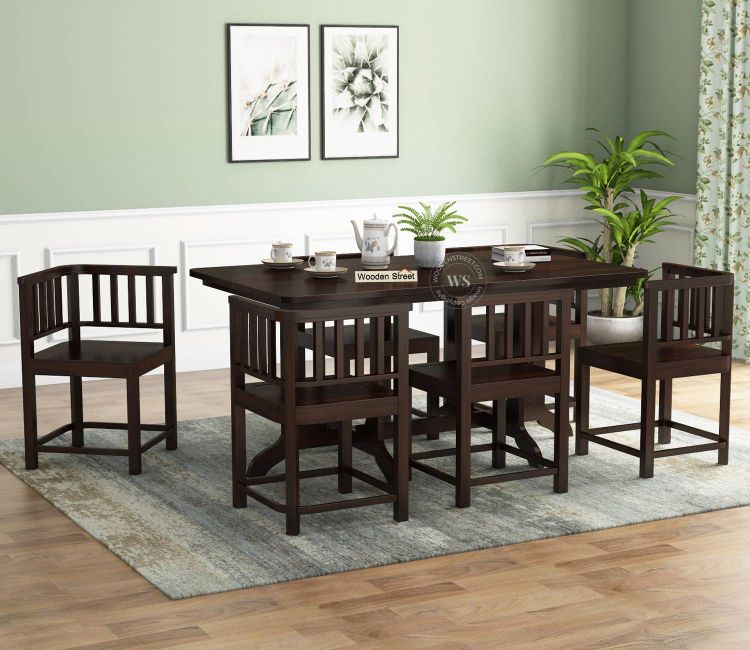Choosing the right dining table can transform the ambiance of your dining space, whether you’re aiming for a sleek, contemporary feel or a timeless, classic look. Dining tables not only serve as functional furniture but also as the centerpiece of your home’s design. Understanding different styles—both modern and classic—can help you make an informed decision that complements your decor and lifestyle. Let’s explore the key characteristics of these styles and how they can fit into your home.
Modern Dining Table Styles
Modern dining tables are defined by clean lines, minimalism, and innovative use of materials. These tables often feature sleek designs that prioritize functionality while maintaining aesthetic appeal. Here are some popular modern styles:
a. Minimalist Tables
Minimalism is a hallmark of modern design. Minimalist dining tables are often simple in shape, with slim legs and a smooth, unembellished surface. Materials such as glass, metal, and wood are used, with a focus on clean lines and open space. These tables are perfect for small spaces and those who prefer a clutter-free environment.
b. Industrial Tables
Inspired by urban lofts and warehouse spaces, industrial-style dining tables embrace raw, unfinished materials like metal, concrete, and reclaimed wood. The rugged, utilitarian look is softened by pairing it with warm-toned wood or leather chairs. This style is ideal for those seeking a bold, edgy aesthetic.
c. Scandinavian Tables
Scandinavian design is known for its balance of form and function. Scandinavian dining tables feature light-colored wood, smooth surfaces, and tapered legs, offering a fresh, airy vibe. These tables blend simplicity with elegance, making them a versatile option for both casual and formal settings.
d. Mid-Century Modern Tables
Inspired by the 1950s and 60s, mid-century modern dining tables have a retro flair. They feature organic shapes, curved edges, and a mix of wood and metal elements. The classic appeal of mid-century design works well in both contemporary and traditional interiors, bridging the gap between old and new.
2. Classic Dining Table Styles
Classic dining tables are characterized by their timeless appeal, rich materials, and intricate detailing. These tables are perfect for those who appreciate tradition and elegance in their home decor. Here are a few iconic classic styles:
a. Traditional Wooden Tables
Nothing says “classic” like a beautifully crafted wooden dining table. Traditional designs often feature rich, dark wood such as mahogany, oak, or walnut. The legs may be carved, and the tabletop may have inlays or other decorative elements. These tables create an air of sophistication and can be the centerpiece of a formal dining room.
b. Farmhouse Tables
Farmhouse-style dining tables are popular for their rustic charm and sturdy construction. Often made from reclaimed or distressed wood, these tables evoke a sense of comfort and warmth. They are typically large and designed to accommodate family gatherings, making them a great choice for open-plan kitchens or dining rooms.
c. French Provincial Tables
Inspired by the French countryside, provincial dining tables feature graceful curves and ornate detailing. These tables are usually made of painted wood with a distressed finish, giving them an antique feel. Soft, neutral colors like ivory, grey, and pastel shades complement the delicate, feminine design of this style.
d. Victorian Tables
For those with a taste for opulence, Victorian dining tables are the epitome of grandeur. These tables are often made from dark, polished wood and feature intricate carvings, claw-foot legs, and decorative flourishes. A Victorian dining table can instantly elevate the elegance of any space, especially when paired with richly upholstered chairs and formal place settings.
3. Combining Modern and Classic Elements
In today’s interior design world, mixing modern and classic styles is becoming increasingly popular. A blend of the two can add depth and personality to your dining space. For example, a minimalist glass table paired with traditional, upholstered chairs creates a balanced contrast. Similarly, a farmhouse-style wooden table with sleek, metal chairs can bring warmth and modernity together.
When combining styles, it’s important to maintain harmony by using complementary colors and materials. This approach allows you to have the best of both worlds, ensuring your dining area is both functional and visually appealing.
4. Choosing the Right Style for Your Space
When selecting a dining table, consider the following factors:
- Space: Make sure the table fits comfortably in your dining area, allowing enough room for chairs and movement.
- Lifestyle: If you frequently host dinner parties or family gatherings, a larger, sturdy table like a farmhouse or traditional wooden style may be ideal. For smaller households or modern apartments, a minimalist or Scandinavian table might be a better fit.
- Existing Decor: Your dining table should complement your existing furniture and decor. If your home has a more modern aesthetic, a sleek, industrial table may enhance the look. For more traditional interiors, a classic wooden or Victorian table would provide continuity.
Conclusion
Whether you prefer the sleek, modern appeal of minimalism or the timeless elegance of a traditional wooden table, there is a dining table style to suit every taste and space. By understanding the key characteristics of modern and classic designs, you can choose a dining table that not only fits your lifestyle but also enhances the overall ambiance of your home.




